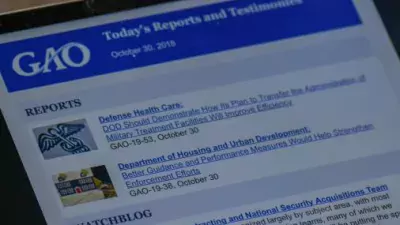Building Capacity in Science & Technology
Here’s some news that’s generating excitement among the nerds here at GAO. (Which, if we’re being honest, is most of us.) Our new science and technology team officially has a plan to rapidly expand the rigorous, nonpartisan analysis it provides to Congress.
GAO has been building its capacity in science and technology since 2002. With this latest step, we are on track to deliver services on a scale that matches the enormous importance of these issues.
You can think of the plan in three parts: people, partnerships, and products.
People
It starts with the people we need to tackle more and more complex analysis. Our first step has been to transfer and hire several staff into the new unit, formally known as Science, Technology Assessment, and Analytics, or STAA.
We plan to bring the team’s roster to 70 people later this year and expand to as many as 140 in the next few years. The existing staff includes PhDs in physics, chemistry, and engineering, as well as a strong contingent of veteran analysts, auditors, specialists, and communicators. Our next round of hiring will emphasize biological sciences, computer engineering, aerospace engineering, and data science and engineering, among other fields. We are also exploring hiring post-doctoral researchers and other limited-term staff to provide expertise tailored to each project.
Partnerships
A second element of the plan is partnerships, which we need in order to give Congress access to world-leading researchers in a variety of fields. We will use partnerships to convene panels of experts, collaborate on research, and conduct peer reviews and other expert reviews.
One of our key partners is the National Academies of Sciences, Engineering, and Medicine. The launch of STAA adds new dimensions to this long-standing relationship. For example, we recently began work on a set of 3 technology assessments on artificial intelligence in health care, which we plan to conduct jointly with panels of researchers to be assembled by the National Academy of Medicine.
We are making additional connections, for example by establishing 2 external boards to further enhance our science and technology work. The first is an advisory board of thought leaders, who will help give us the vision to anticipate and respond to critical technologies as they emerge, or even before. Its members will include experts from industry, academia, and nonprofits, as well as former senior government officials. The second will be made up of experts who will focus on our technology assessments, helping us ensure they are rigorous, relevant, and fully peer reviewed.
Products
A third element of the STAA plan is product improvements to align with the fast pace of both congressional work and technological change. We will place greater emphasis on technical assistance and other ways to deliver rigorous analysis on tight deadlines.
For example, we are applying a new method for the evaluation of policy options in our technology assessments. As a nonpartisan, fact-based agency, we do not propose policies, but we will now give a balanced analysis of the pros, cons, and trade-offs of options proposed by others.
STAA will also write audit reports, the products for which GAO is best known and which save taxpayers billions of dollars each year. To further strengthen this core line of work, STAA is creating an innovation lab to help GAO make greater use of tools such as advanced analytics and data science. STAA will also update and enhance GAO’s best-practice guides for keeping large federal acquisitions on schedule and on budget.
Looking Forward
In a blog post in January, we described the “what” of the STAA team. With our new plan, submitted to Congress in March and made public April 10, we now have the “how.” This plan puts GAO’s newest team on a path to deliver faster, more insightful analysis for Congress and the American people.
Comments on GAO’s WatchBlog? Contact blog@gao.gov.
GAO Contacts

GAO's mission is to provide Congress with fact-based, nonpartisan information that can help improve federal government performance and ensure accountability for the benefit of the American people. GAO launched its WatchBlog in January, 2014, as part of its continuing effort to reach its audiences—Congress and the American people—where they are currently looking for information.
The blog format allows GAO to provide a little more context about its work than it can offer on its other social media platforms. Posts will tie GAO work to current events and the news; show how GAO’s work is affecting agencies or legislation; highlight reports, testimonies, and issue areas where GAO does work; and provide information about GAO itself, among other things.
Please send any feedback on GAO's WatchBlog to blog@gao.gov.








